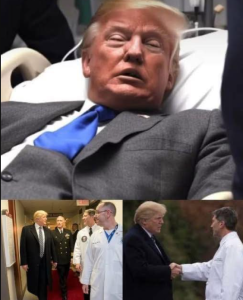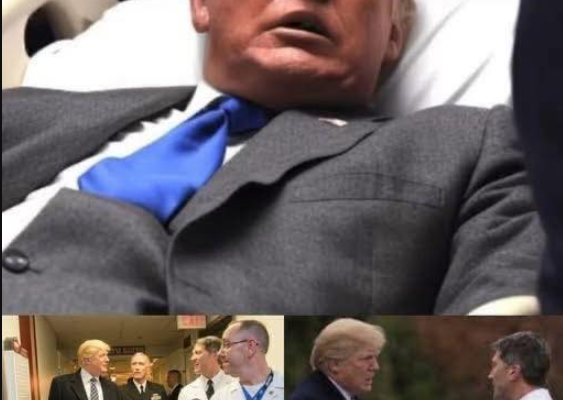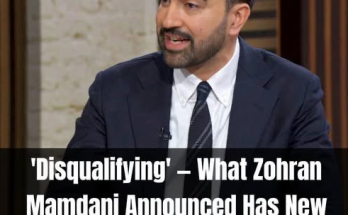The Silence at the Summit: Donald Trump’s Bad News Weekend
It began with a whisper.
On the morning of August 30th, social media erupted with a single question: Where is Donald Trump? The President, known for his relentless public presence and frequent Truth Social posts, had gone quiet. No press conferences. No appearances. No statements on the recent tragedy in Minneapolis. Just silence.
And in Washington, silence is never just silence.
Rumors spread like wildfire. Some claimed he was ill. Others said he’d been hospitalized. A few even insisted he was dead. The hashtags #TrumpIsDead and #WhereIsTrump trended globally, fueled by grainy photos, speculative videos, and a spike in pizza orders near the Pentagon—a Cold War-era signal that something big was happening behind closed doors.
But the truth, as always, was more complicated.
Earlier that week, Trump had been diagnosed with chronic venous insufficiency (CVI), a circulatory condition common in older adults. It wasn’t life-threatening, but it was visible. Swollen ankles. Bruised hands. A limp that hadn’t been there before.
His physician released a statement: “The President remains in excellent health. The bruising is consistent with minor soft tissue irritation from frequent handshaking and aspirin use.”
But the public wasn’t convinced.
Photos of Trump on the golf course showed a man who looked tired, pale, and distant. His signature red hat sat awkwardly on his head, and his gait was uneven. Comparisons to Joe Biden—who had recently announced a cancer diagnosis—only intensified the scrutiny.
And then came the court ruling.
A federal appeals court had struck down Trump’s sweeping “reciprocal tariffs,” declaring them illegal and beyond presidential authority. The decision undercut one of his signature economic strategies and sent shockwaves through global markets.
It was a double blow: physical vulnerability and political defeat.
Inside the White House, aides scrambled to contain the fallout. Vice President J.D. Vance gave a carefully worded interview, saying he was “confident the President would serve out his term,” but adding, “God forbid, if there’s a terrible tragedy, I’ve had the best on-the-job training possible”.
The phrasing was meant to reassure.
It didn’t.
Instead, it fueled speculation that something was seriously wrong.
By Saturday morning, Trump reappeared.
He was photographed leaving the White House with his grandchildren, heading to a golf outing in Virginia. He smiled for the cameras, waved to reporters, and made a brief statement about the Minneapolis shooting: “Please join me in praying for everyone involved”.
But the damage had been done.
The rumors, the health concerns, the legal setbacks—they had converged into a single narrative: Donald Trump was no longer invincible.
For years, Trump had built his brand on strength. He was the dealmaker, the disruptor, the man who could bend the world to his will. He survived scandals, impeachments, and investigations. He defied polls, pundits, and precedent.
But now, the cracks were showing.
His health was under scrutiny. His policies were being dismantled. His visibility was fading.
And in politics, perception is everything.
Behind closed doors, sources described a President increasingly isolated. His inner circle had shrunk. His schedule was lighter. His tone, once combative, had grown subdued.
“He’s tired,” one aide said. “He’s not the same.”
Another added, “He’s still sharp. But he’s distracted. He’s thinking about legacy.”
The court’s decision on tariffs was particularly painful. Trump had long argued that America was being exploited by foreign trade partners. His reciprocal tariffs were meant to level the playing field. But the court ruled that he had overstepped, invoking emergency powers without sufficient justification.
The ruling not only invalidated the tariffs—it questioned his judgment.
And with the Supreme Court appeal deadline looming, the administration faced a race against time.
Meanwhile, the media frenzy continued.
Talk shows dissected his appearance. Analysts debated his future. Satirical clips circulated, including AI-generated videos falsely claiming The Simpsons had predicted his death.
It was chaos.
And in the midst of it, Trump remained mostly silent.
But silence, for Trump, is rarely surrender.
Sources close to the President say he’s planning a major address—one that will confront the rumors, defend his record, and lay out his vision for the remainder of his term.
“He’s not done,” one insider said. “He’s regrouping.”
Still, the weekend marked a turning point.
Not because of a diagnosis.
Not because of a court ruling.
But because, for the first time in years, the myth of Donald Trump—the untouchable, unshakable force—was questioned.
And in politics, myths matter.
As the sun set over Washington, the city buzzed with uncertainty. The President was alive. But the questions remained.
Was he healthy enough to lead?
Was his agenda still viable?
Was his grip on power slipping?
Only time would tell.
But one thing was clear:
Donald Trump had gotten more bad news.
And the world was watching.


